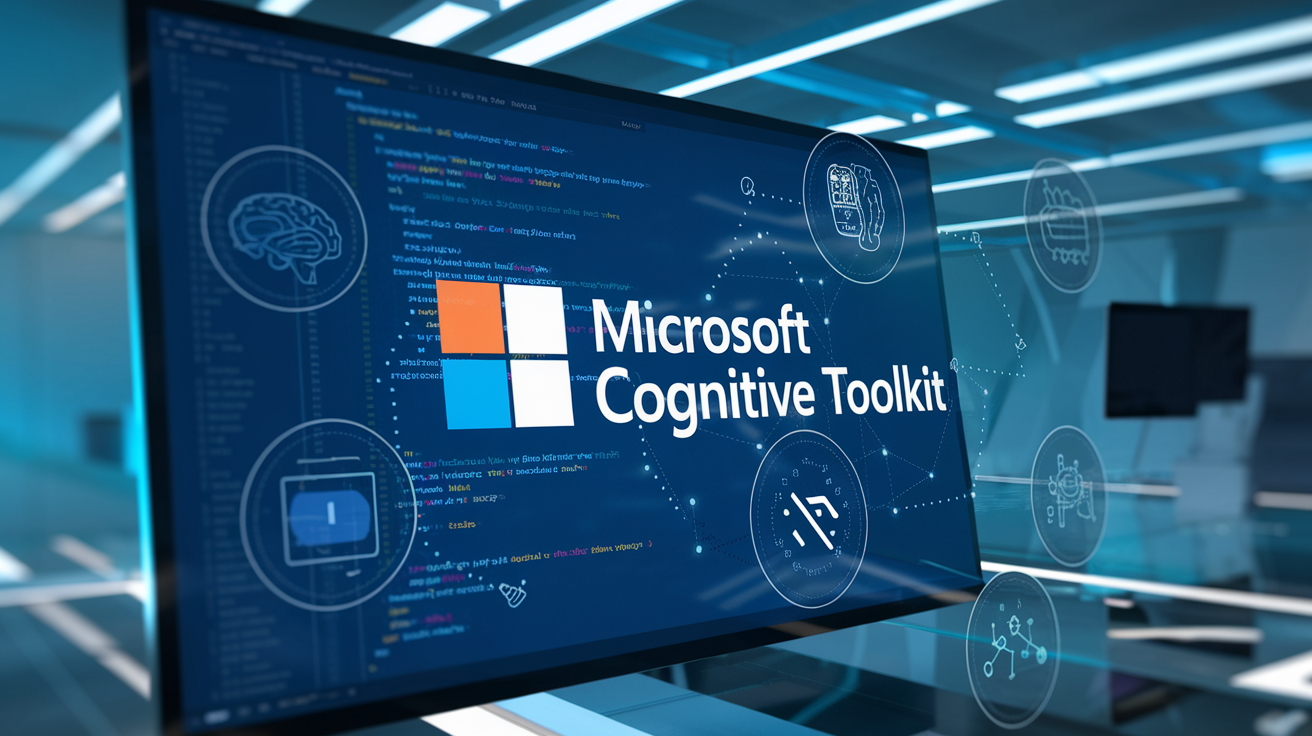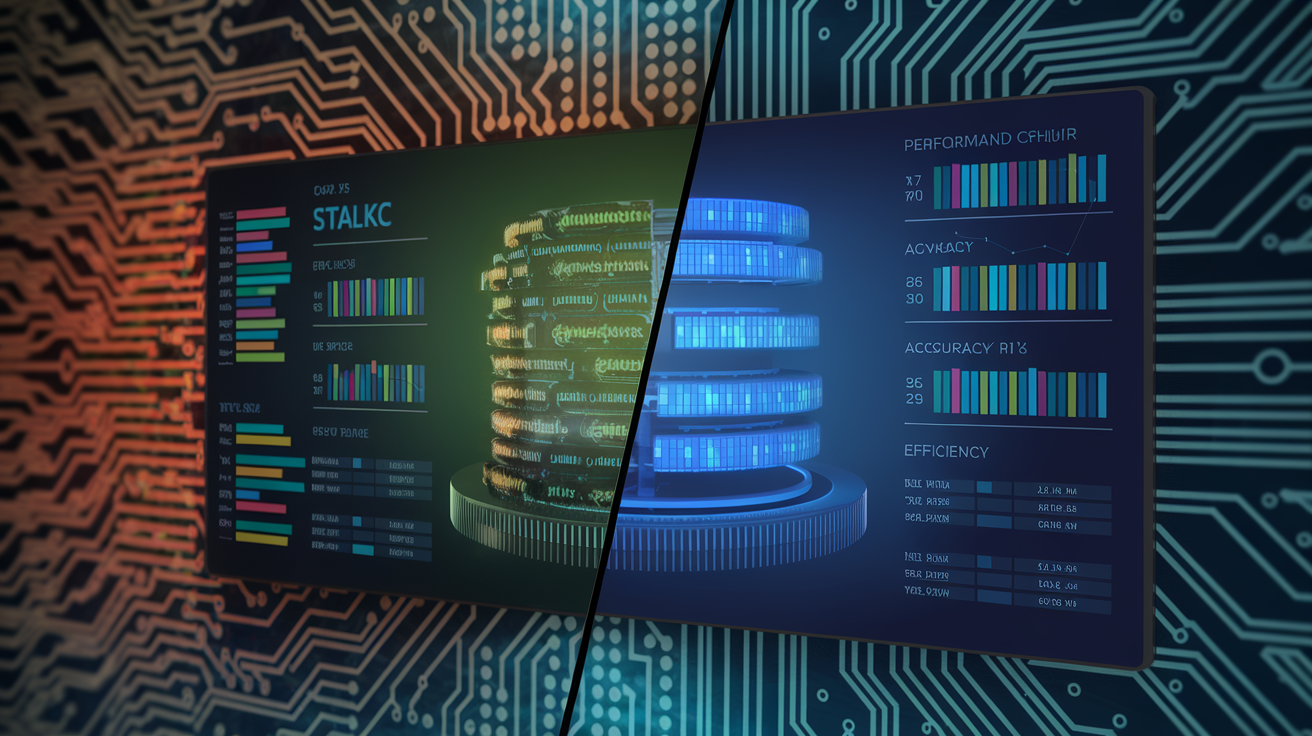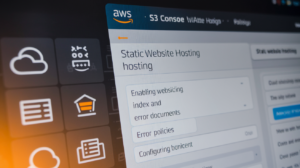Artificial Intelligence is revolutionizing industries, but with so many open-source AI stacks available, how do you choose the right one for your project? 🤔 From TensorFlow to PyTorch, each stack offers unique features and capabilities that can make or break your AI endeavors.
In this comprehensive guide, we’ll dive deep into the world of popular Open AI Stacks, comparing their strengths, weaknesses, and use cases. Whether you’re a seasoned data scientist or a curious beginner, understanding these powerful tools is crucial for staying ahead in the rapidly evolving AI landscape. Get ready to explore the TensorFlow ecosystem, uncover the flexibility of PyTorch, and discover hidden gems like the Microsoft Cognitive Toolkit and Apache MXNet.
Join us as we examine performance benchmarks, community support, and real-world applications of these AI powerhouses. By the end of this post, you’ll have a clear understanding of which AI stack best suits your needs and gain insights into the future trends shaping the world of open-source AI development. Let’s embark on this exciting journey through the realm of Open AI Stacks! 🚀
Overview of Popular Open AI Stacks

A. Definition and importance of AI stacks
AI stacks are comprehensive collections of software tools, libraries, and frameworks that enable developers to build, train, and deploy artificial intelligence and machine learning models efficiently. These stacks play a crucial role in the AI ecosystem by providing:
- Streamlined development processes
- Scalable infrastructure
- Optimized performance
- Collaboration and knowledge sharing
The importance of AI stacks cannot be overstated, as they:
- Accelerate AI development
- Reduce barriers to entry
- Enable cross-platform compatibility
- Foster innovation in the field
| Component | Purpose |
|---|---|
| Core Libraries | Provide essential building blocks for AI models |
| Data Processing Tools | Handle data preparation and manipulation |
| Model Training Frameworks | Facilitate the creation and training of AI models |
| Deployment Solutions | Enable seamless integration of AI models into applications |
B. Key components of AI stacks
AI stacks typically consist of several interconnected components:
- Data preprocessing tools
- Machine learning algorithms
- Neural network architectures
- Model optimization techniques
- Deployment and serving infrastructure
These components work together to create a cohesive ecosystem for AI development, allowing researchers and developers to focus on solving complex problems rather than reinventing the wheel.
C. Evolution of open-source AI technologies
Open-source AI technologies have undergone significant evolution over the past decade:
- Early 2010s: Rise of specialized libraries (e.g., scikit-learn)
- Mid-2010s: Emergence of comprehensive frameworks (TensorFlow, PyTorch)
- Late 2010s: Focus on scalability and distributed computing
- Early 2020s: Integration of AI with cloud services and edge computing
This evolution has democratized AI development, making advanced tools accessible to a broader audience and driving rapid progress in the field.
TensorFlow Ecosystem

Core features and capabilities
TensorFlow, developed by Google, offers a comprehensive ecosystem for machine learning and deep learning tasks. Its core features include:
- Flexible architecture for deployment across various platforms
- Eager execution for immediate operation evaluation
- TensorFlow Extended (TFX) for end-to-end ML pipelines
- TensorFlow Lite for mobile and embedded devices
- TensorFlow.js for browser-based ML
Ease of use and learning curve
While TensorFlow has a steeper learning curve compared to some frameworks, it offers:
- High-level APIs like Keras for easier model building
- Extensive documentation and tutorials
- Visual tools like TensorBoard for model visualization
| Aspect | Beginner-Friendly | Advanced Users |
|---|---|---|
| APIs | Keras, Estimators | Low-level Core |
| Tools | TensorBoard | Custom Ops |
| Docs | Tutorials, Guides | Research Papers |
Performance and scalability
TensorFlow excels in:
- Distributed training across multiple GPUs and TPUs
- Graph optimization for improved inference speed
- XLA (Accelerated Linear Algebra) for enhanced performance
Community support and resources
TensorFlow boasts:
- Large and active developer community
- Regular updates and improvements
- Vast ecosystem of pre-trained models and tools
With its robust features and extensive support, TensorFlow remains a top choice for AI developers. Next, we’ll explore the PyTorch framework and how it compares to TensorFlow in various aspects.
PyTorch Framework

Distinctive features and strengths
PyTorch stands out among AI frameworks due to its dynamic computational graph and user-friendly design. Its key strengths include:
- Intuitive Python-like syntax
- Easy debugging and model prototyping
- Native support for GPU acceleration
- Seamless integration with the Python ecosystem
These features make PyTorch particularly attractive for researchers and developers who prioritize flexibility and ease of use in their AI projects.
Dynamic computation graphs
One of PyTorch’s most significant advantages is its dynamic computation graph, also known as “define-by-run.” This approach allows for:
- Real-time graph construction during runtime
- Easy modification of network behavior on-the-fly
- Efficient handling of variable-length inputs
| Feature | Static Graph (e.g., TensorFlow) | Dynamic Graph (PyTorch) |
|---|---|---|
| Graph Definition | Before execution | During runtime |
| Flexibility | Limited | High |
| Debugging | Challenging | Straightforward |
| Performance | Optimized for production | Optimized for research |
Research-friendly architecture
PyTorch’s architecture is designed with research in mind, offering:
- Easy-to-use APIs for rapid prototyping
- Extensive support for custom layer definitions
- Built-in autograd system for automatic differentiation
- Seamless transition between eager and graph execution modes
These features make PyTorch an excellent choice for academia and research-oriented organizations, enabling quick experimentation and innovation in AI model development.
Integration with other Python libraries
PyTorch’s seamless integration with the Python ecosystem is a major advantage. It works well with popular data science and machine learning libraries, including:
- NumPy for numerical computing
- Pandas for data manipulation
- Scikit-learn for traditional machine learning algorithms
- Matplotlib and Seaborn for data visualization
This integration allows developers to leverage existing Python skills and tools, creating a smooth workflow from data preprocessing to model deployment.
Microsoft Cognitive Toolkit (CNTK)

Key advantages and use cases
Microsoft Cognitive Toolkit (CNTK) offers several key advantages that make it a popular choice for specific use cases in the AI industry:
- Scalability: CNTK excels in handling large-scale models and datasets
- Speed: Known for its fast training and inference times
- Flexibility: Supports both CPU and GPU processing
- Integration: Seamlessly integrates with Microsoft Azure cloud services
Use cases where CNTK shines:
- Natural Language Processing (NLP)
- Speech Recognition
- Image Recognition
- Reinforcement Learning
| Advantage | Description |
|---|---|
| Scalability | Efficiently handles large-scale models and datasets |
| Speed | Fast training and inference times |
| Flexibility | Supports both CPU and GPU processing |
| Integration | Seamless integration with Microsoft Azure cloud services |
Computational network approach
CNTK’s computational network approach is a unique feature that sets it apart from other AI frameworks:
- Directed Graphs: Represents neural networks as directed graphs
- Nodes: Represent operations or network layers
- Edges: Represent data flow between nodes
This approach offers several benefits:
- Efficient memory usage
- Automatic differentiation
- Easy visualization of complex models
Performance on distributed systems
CNTK excels in distributed computing environments, making it ideal for large-scale AI projects:
- Multi-GPU Support: Efficiently utilizes multiple GPUs for parallel processing
- Distributed Training: Supports training across multiple machines
- 1-bit SGD: Implements a unique algorithm for efficient distributed training
Performance metrics:
| Metric | CNTK Performance |
|---|---|
| Scaling Efficiency | Up to 90% on 64 GPUs |
| Communication Overhead | Minimized through 1-bit SGD |
| Training Speed | Up to 2x faster than some competitors |
CNTK’s performance on distributed systems makes it a strong contender for enterprises and research institutions working on complex AI projects that require significant computational power.
Apache MXNet

Scalability and flexibility
Apache MXNet stands out for its exceptional scalability and flexibility, making it a powerful choice for various AI and machine learning projects. Its hybrid nature allows for both imperative and symbolic programming, giving developers the freedom to choose the most suitable approach for their specific tasks.
- Key scalability features:
- Distributed training across multiple GPUs and machines
- Automatic parallelization
- Memory optimization for large-scale models
MXNet’s flexibility is evident in its support for various neural network architectures and its ability to handle both production and research environments seamlessly.
Multi-language support
One of MXNet’s strongest selling points is its extensive multi-language support, catering to a diverse range of developers and data scientists. This feature significantly reduces the barrier to entry for professionals from different programming backgrounds.
| Language | Level of Support |
|---|---|
| Python | Excellent |
| C++ | Strong |
| R | Good |
| Julia | Good |
| Scala | Good |
| JavaScript | Basic |
| Perl | Basic |
Integration with cloud platforms
MXNet’s integration capabilities with major cloud platforms make it an attractive option for organizations looking to leverage cloud resources for their AI projects.
- Cloud platform integrations:
- Amazon Web Services (AWS)
- Microsoft Azure
- Google Cloud Platform (GCP)
These integrations enable seamless deployment, scaling, and management of MXNet models in cloud environments, facilitating efficient development and production workflows. With cloud support, developers can easily access powerful computing resources and take advantage of managed services for model training and inference.
Comparison of AI Stack Performance

Benchmarking methodologies
When comparing AI stack performance, it’s crucial to use standardized benchmarking methodologies. Popular benchmarks include:
- MLPerf: A comprehensive suite for measuring training and inference performance
- DeepBench: Focuses on basic operations in deep learning
- DAWNBench: Emphasizes end-to-end deep learning training and inference
Here’s a comparison of these benchmarking methodologies:
| Benchmark | Focus | Metrics | Scope |
|---|---|---|---|
| MLPerf | Training & Inference | Time-to-train, queries per second | Comprehensive |
| DeepBench | Basic operations | FLOPS, memory bandwidth | Low-level |
| DAWNBench | End-to-end tasks | Time, cost, accuracy | Task-specific |
Training speed and efficiency
Training speed and efficiency vary significantly among AI stacks. TensorFlow and PyTorch often lead in this area, with CNTK and MXNet following closely. Factors affecting training performance include:
- Automatic differentiation capabilities
- GPU utilization
- Distributed training support
- Memory management
Inference performance
Inference performance is critical for real-world applications. Key factors include:
- Model optimization techniques
- Quantization support
- Batching capabilities
- Hardware acceleration
Hardware compatibility and optimization
AI stacks differ in their hardware compatibility and optimization features:
- GPU support (NVIDIA, AMD)
- TPU compatibility (especially for TensorFlow)
- FPGA and ASIC integration
- Edge device optimization
TensorFlow excels in hardware compatibility, while PyTorch offers excellent GPU optimization. CNTK and MXNet provide strong performance on specific hardware configurations.
Now that we’ve examined the performance aspects of AI stacks, let’s explore their ecosystem and community support in the next section.
Ecosystem and Community Support

Documentation and learning resources
When it comes to ecosystem and community support, documentation and learning resources play a crucial role in the adoption and success of open AI stacks. Let’s compare the resources available for popular frameworks:
| Framework | Documentation Quality | Tutorials | Community Forums | Video Courses |
|---|---|---|---|---|
| TensorFlow | Comprehensive | Abundant | Active | Numerous |
| PyTorch | Well-organized | Extensive | Vibrant | Growing |
| CNTK | Detailed | Limited | Moderate | Few |
| MXNet | Adequate | Moderate | Small but active | Limited |
TensorFlow and PyTorch lead the pack with extensive documentation and a wealth of learning resources. Both offer:
- Official tutorials and guides
- Community-contributed examples
- Regular workshops and webinars
- Integration with popular online learning platforms
Third-party libraries and tools
The availability of third-party libraries and tools greatly enhances the functionality and ease of use of AI stacks. Here’s a breakdown of the ecosystem support:
- TensorFlow: Boasts a vast ecosystem with tools like TensorBoard for visualization and Keras for high-level APIs
- PyTorch: Growing rapidly with libraries such as torchvision for computer vision and torchtext for NLP
- CNTK: Limited third-party support, but integrates well with Azure services
- MXNet: Offers GluonCV and GluonNLP, specialized libraries for computer vision and natural language processing
Active development and updates
Continuous development and regular updates are essential for keeping AI stacks relevant and performant. Here’s how the frameworks compare:
- TensorFlow: Frequent releases with major version updates annually
- PyTorch: Rapid development cycle with new features added regularly
- CNTK: Less frequent updates, but still maintained
- MXNet: Steady progress with focus on scalability and cloud integration
The active development in TensorFlow and PyTorch has contributed significantly to their popularity and wide adoption in both academia and industry.
Use Cases and Industry Adoption

Research applications
Open AI stacks have revolutionized the landscape of research applications, enabling groundbreaking discoveries across various scientific domains. Here’s a breakdown of how different frameworks are utilized in research:
| Framework | Research Applications |
|---|---|
| TensorFlow | Natural Language Processing, Computer Vision |
| PyTorch | Reinforcement Learning, Generative Models |
| CNTK | Speech Recognition, Time Series Analysis |
| Apache MXNet | Large-scale Distributed Training, Robotics |
Researchers often leverage these frameworks to:
- Develop novel algorithms
- Conduct experiments on massive datasets
- Implement complex neural network architectures
- Accelerate computational processes
Enterprise implementations
In the enterprise sector, open AI stacks have become integral to driving innovation and efficiency. Companies across industries are adopting these frameworks to:
- Enhance customer experiences through personalized recommendations
- Optimize supply chain operations with predictive analytics
- Improve fraud detection in financial services
- Automate quality control in manufacturing processes
The choice of framework often depends on specific business needs, existing infrastructure, and in-house expertise.
Mobile and edge computing scenarios
As AI moves closer to end-users, mobile and edge computing scenarios have gained significant traction. Open AI stacks are adapting to meet these demands:
- TensorFlow Lite enables on-device machine learning for mobile and IoT devices
- PyTorch Mobile provides optimized libraries for deploying models on smartphones
- CNTK and Apache MXNet offer lightweight versions for edge computing
These frameworks empower developers to create AI-powered applications that run efficiently on resource-constrained devices, opening up new possibilities in areas such as:
- Augmented reality
- Real-time language translation
- Smart home automation
- Autonomous vehicles
The industry adoption of open AI stacks across research, enterprise, and mobile/edge computing showcases their versatility and impact on technological advancement.
Future Trends in Open AI Stacks

Emerging technologies and integrations
As the field of AI continues to evolve rapidly, we can expect to see exciting new technologies and integrations in open AI stacks. Some of the most promising trends include:
- Federated Learning
- Edge AI
- AutoML
- Quantum Machine Learning
These emerging technologies are poised to revolutionize the way we develop and deploy AI models. Let’s take a closer look at their potential impact:
| Technology | Description | Potential Impact |
|---|---|---|
| Federated Learning | Allows model training on distributed datasets | Enhanced privacy and data security |
| Edge AI | Enables AI processing on edge devices | Reduced latency and improved efficiency |
| AutoML | Automates the process of model selection and hyperparameter tuning | Democratization of AI development |
| Quantum ML | Leverages quantum computing for machine learning tasks | Exponential speedup for certain algorithms |
Potential convergence of frameworks
As the AI landscape matures, we may witness a convergence of popular frameworks. This trend could manifest in several ways:
- Increased interoperability between frameworks
- Adoption of common standards and formats
- Merging of complementary features across platforms
The potential benefits of this convergence include:
- Simplified workflow for developers
- Enhanced portability of models
- Accelerated innovation through shared resources
Impact of hardware advancements
Hardware advancements will continue to play a crucial role in shaping the future of open AI stacks. Key areas of development include:
- Specialized AI chips (e.g., TPUs, NPUs)
- Neuromorphic computing
- Photonic computing
These advancements promise to deliver:
- Improved energy efficiency
- Faster training and inference times
- Support for more complex AI models
As hardware capabilities expand, we can expect open AI stacks to evolve in tandem, leveraging these new technologies to push the boundaries of what’s possible in artificial intelligence.

The landscape of open AI stacks is diverse and dynamic, offering developers and organizations a range of powerful tools to build and deploy artificial intelligence solutions. TensorFlow, PyTorch, Microsoft Cognitive Toolkit (CNTK), and Apache MXNet each bring unique strengths to the table, from TensorFlow’s extensive ecosystem to PyTorch’s flexibility and ease of use. While performance metrics vary depending on specific use cases, all these frameworks have proven their capabilities in various industry applications.
As the field of AI continues to evolve, the choice of an AI stack will depend on factors such as project requirements, team expertise, and specific industry needs. Staying informed about the latest developments in these frameworks and their growing ecosystems will be crucial for organizations looking to leverage AI technologies effectively. Ultimately, the right choice will empower developers to create innovative AI solutions that drive progress across industries.




















